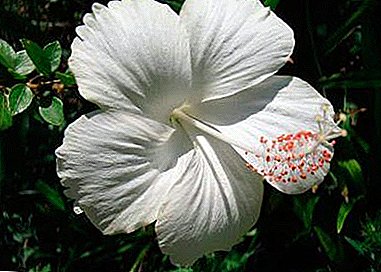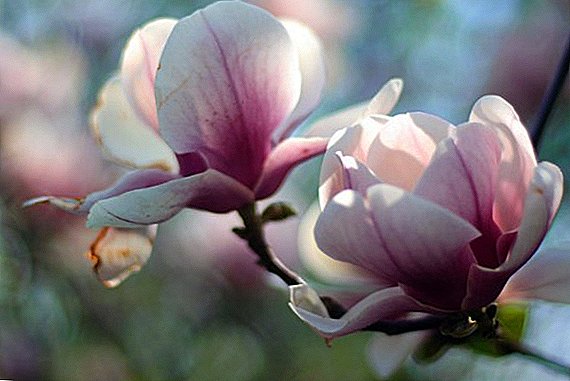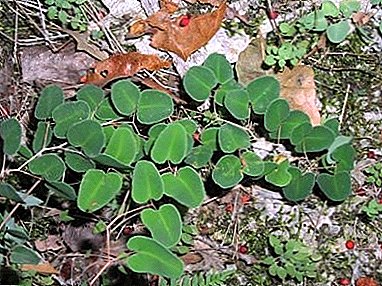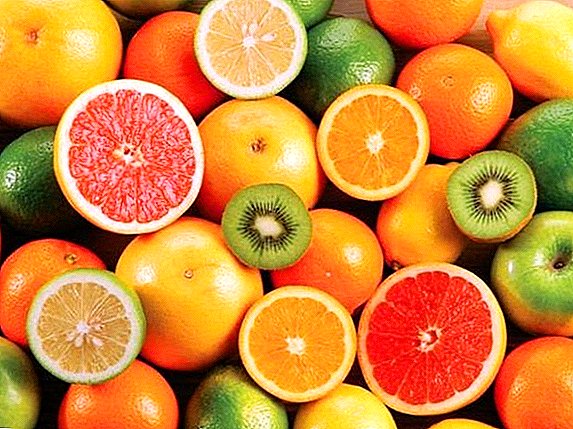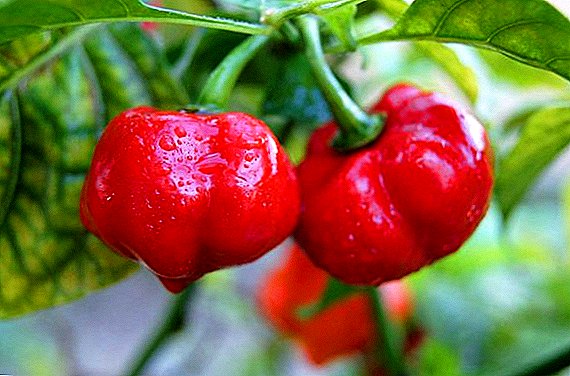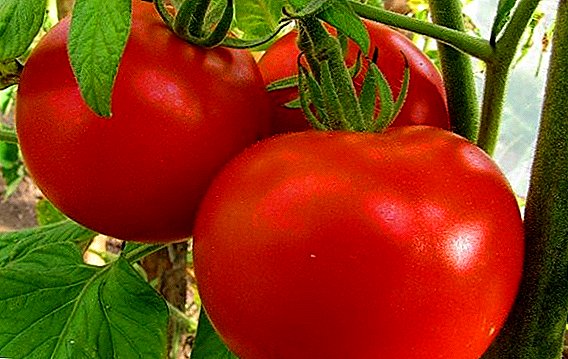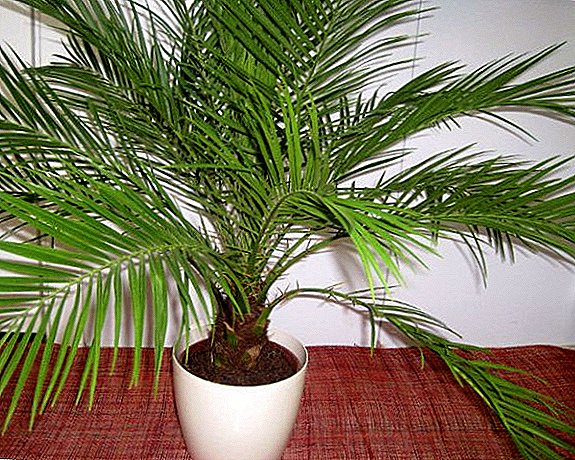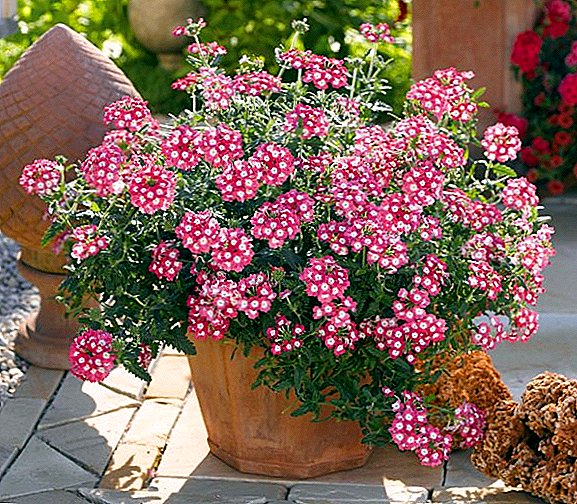 The beauty of the ampelous plants is fascinating. Every experienced hostess who wants to decorate the balcony or cottage with little effort and expense will definitely choose the ampelous flowers for this, which look best in hanging pots.
The beauty of the ampelous plants is fascinating. Every experienced hostess who wants to decorate the balcony or cottage with little effort and expense will definitely choose the ampelous flowers for this, which look best in hanging pots.
Ampelnaya plants - These are flowers that grow mostly in hanging pots.
Did you know? The word Ampel in German means "hanging vase for flowers".
The advantages of ampel colors
The huge choice and variety of ampelous crops, as well as the fact that they bloom almost all summer, is their main advantage. Also, ampelous plants are an element that can clog any flaw and turn it into an advantage. Creating unique flower arrangements is possible thanks to an incredible number of colors, shapes and types of flowers, which are greatly appreciated not only by professionals - landscape designers, but also by amateur flower growers.
What ampel flowers to choose for pots
There are many types of these wonderful plants. To choose flowers for planters, it is important to know how to care for them.
Flowers such as gaillardia, carnation, feverfew, vatochnik, hibiscus, roses, veronica, rudbeckia, kosmeya and ghazania truly decorate your garden and fill it with rich, bright colors.Some information on how to grow flowers in pots:
- Ampel petunia blooms until the first cold, loves a sunny place, rich soil and moderate watering.
- Calibrachoa needs a rich and nutritious soil. If you regularly water the plant, then the calabraha can easily be in the sun.
- Surfiniya requires regular watering and fertilizing, easily transfers direct sunlight.
- Tumbelina, like petunia, grows well in nutrient soil and likes regular watering, and it develops well in the sun.
- Bacopa blooms before the onset of frost, unpretentious to light, loves moderate watering.
- Verbena can tolerate frosts down to -3 ° C, as well as drought. Does not like overmoistened soil, feels good in the sun.

- Geranium (pelargonium) is considered the most unpretentious to care for the flower, not afraid of over-dried soil, so if you do not water it for a while, it will not disappear.
- Dichondra is also unpretentious to care, grows well on acidic moisture-absorbing soil, does not tolerate stagnant water, requires regular fertilizing for good growth.
- Campanula does not like direct sunlight, can tolerate small frosts. He likes abundant watering, but so that the water does not stagnate.
- Lobelia - a flower unpretentious to light: it can grow in the sun and in the shade. Likes moist, humus-rich soil.
- Ampel nasturtium blooms well in the sun, prefers moderately fertile soil and regular watering.
- Ampel fuchsia badly transfers direct sunshine, loves plentiful watering and top dressing.
- Begonia is quite whimsical to care.
Important! Begonia does not tolerate heat and requires constant watering. It suffers from direct sunlight, needs shading.
Consider each view separately.
Ampel petunia

Petunia - the most popular type of plant among flower growers. This is due to the variety of shapes and colors that allow you to create beautiful compositions. Ampelous petunias begin to sag in the condition of seedlings, they grow very quickly and begin to hang from hanging pots. A variety of ampelous petunias are the hybrids "Fortuna Wonder Wave" and "Fortuna Wave". They are characterized by large and abundant flowers, and shoots sometimes reach 100 cm.
The most popular varieties of petunia:
- "Avalanche";
- "Avalanche Red".
Important! To buy quality petunia, you need to pay attention to the lower shoots: if they are missing leaves, then they are considered overgrown. It is also not advised to acquire ampelous petunias, which have too long shoots, they are difficult to transport and they need to be shaped.
Calibrachoa

About twenty years ago, this flower was considered a separate variety of petunia. But after a while, it was found that these are completely different plants, although similar in appearance. Calibrachoa has small flowers with a brightly colored throat that stands out against the main color of the petals. The branches of the plant are twisted and woody. A characteristic feature of the plant is small leaves of oblong shape. Caliberhoa is a natural color with purple with a bright yellow throat. But at the moment there are many varieties that have a variety of petal colors. There is a variety of calibrahoa "Million Belz". It received its name for abundant flowering - in translation it means "a million bells."
Surfinia

Surfinia - It is a hybrid of ampelous petunia, it was derived by Japanese breeders. Plants are very similar to each other, but still have some differences. The shoots of surfini are much more powerful and stronger, the plant itself is higher than petunia, which allows you to create many new compositions that could not be done with ampelous petunia. This hybrid blooms white, pink, red, burgundy, purple, yellow, sometimes has several colors.
The most popular varieties of surfinia:
- "Hot Pink" - hot pink color flowers with crimson veins;
- "Table White" - is popular because it has a long flowering period and is distinguished by large flowers in the form of white bells;
- "Burgundy" - a massive bush with bright flowers of wine color;
- "Giant Parple" - purple flowers with a red tint and a massive bush with long shoots;
- "Elow" - different early flowering and has a bright yellow color of buds;
- "Red" - the bush has a compact form with abundant bright red flowering.
Tumbelina

Tumbelina is a type of petunia ampella.
The most popular grades of tumbelins:
- "Suzanne";
- Priscilla;
- "Katharina".
Did you know? Such a name this variety received from the breeder David Kerley, who named the flower in honor of his beloved wife.Tumbelina "Katharina" - variety with double flowers of raspberry color.
Bakopa

Bakopa - a relatively new type of ampelous plants for the home. This type of plant is distinguished by the fact that it can be kept in the apartment in the winter and planted in a cache-pot again in the spring. Bacopa grows in the wild in South America. It is surprising that this flower can be used as aquarium gardening, as in the wild it is also found in the form of an aquatic plant. This contributes to the fact that bacopa can be used in decorating ponds, lakes and pools. The plant has small bright green leaves and small flowers of various colors. Due to the fact that the flower is adapted to different weather conditions, it can be grown in different regions.
Bacopa perfectly complements the composition of other flowers, but can also compete with many plants alone. Bacopa blooms at the same time and abundantly for about four weeks, then goes into a dormant period of up to 20 days. After resting, Bacopa blooms again, and so it repeats a few more times, each time the blooming becomes more abundant than the previous one.
Indoor plants such as Kalanchoe pinnate, Clerodendrum, Piperomy, Howea, Kalanchoe Kalandiva, Ficus Microcarp, Kalanchoe Degremona, Tsiperus, strawberry tree and Haworthia will inspire you and improve your quality of life.
Begonia

Begonia, thanks to its beautiful decorative appearance, is a popular ampelous flower. There is a large variety of begonias, the most popular is Chanson. It has large or semi-double flowers of large sizes, sometimes up to 8 cm. The shape of the flower resembles camellia, shoots of medium length up to 40 cm. Also this series of begonias differs in a variety of colors: white, yellow, salmon, pink, copper, bright red, dark red, vanilla yellow, pink white, orange yellow.
Verbena

Verbena is most often grown as a one-year-old, although it can calmly winter in a warm apartment. It actively grows, shoots reach 60 cm in length. In the wild, verbena is found in the form of herbaceous or semi-woody plants; it lives in South America, Europe, Canada and Central Asia. Verbena leaves are quite dense, bright green. The flowers are small, have five petals and can be pink, purple, blue or red.
There are many varieties of ampelous verbena, but most often you can find "Image" and "Moon River":
- "Moon River" considered to be a new variety of vervain, has a medium length of shoots (45 cm); small lavender flowers abundantly strew the plant;
- "Image" - the most popular variety of ampelous verbena, the length of the shoots is about 50 cm, the flowers are lilac-purple.
Geranium (Pelargonium)

The most famous type of pelargonium ampelous is considered to be pelargonium thyroid, or ivy. In the wild, it lives in South Africa. The shoots of thyroid geraniums reach 90 cm. The leaves are smooth, unlike the usual vertically growing pelargonium, which has leaves covered with a fluff. Flowers are in the form of stars, collected in one bunch. The inflorescence is large, has up to 30 small flowers, which bloom up to 6 days each. The color of flowers varied: pink, purple, white, lilac, two-tone, as well as with a border, spots and strokes.
Dichondra

Dichondra - This is a perennial herbaceous evergreen plant belonging to the family of convolvulidae. The genus Dikhondra has 10 species of plants. Dichondra is distinguished by its long shoots, which reach a length of 1.5 m. Its decorativeness, compared to other ampelous plants, is preserved thanks to not beautiful abundant flowers, but bright green leaves densely planted on the stems. They are round and reach 2.5 cm in diameter. Dichondra has an inconspicuous yellowish bloom, the flowers are very small, only 2 mm.
The most popular type of amidel dichondra is silver or creeping dichondra.
In countries where winters are frosty, dichondra is grown as an annual flower, as it is considered a heat-loving plant. In the warm southern countries, dichondra is grown as a perennial. Interestingly, in Australia dichondra creeping is so common in nature that it is considered a weed, which is actively struggling.
Campanula

Ampel campaign - herbaceous plant with stems up to 30 cm. Leaves are round with jagged edges, light green, up to 5 cm in diameter. Campanula blooms in white or blue in different shades of color. People call this flower "bride and groom", because the campanula has two-color buds. Campanula flowers are fairly abundant and large, up to 4 cm in diameter. Campanula flowering continues from spring to autumn, which is very attractive flower growers, so the flower is considered quite popular for growing.
Lobelia

Lobelia - perennial herbaceous plant belonging to the bell family. In the wild, it grows in North America. Often used florist as one-year. For lobelia are characterized by elongated, small, shiny leaves, which are densely located on the stems, reaching 50 cm. Small flowers of lobelia are blue, blue, purple, purple.
Ampelnaya nasturtium

Nasturtium - It is a perennial culture that is common in the wild in South and Central America. For decorative purposes it is used as a one-year-old.
Types of amute nasturtium:
- terry nasturtium - propagated by seeds, has incredible double flowers, for which it is also called supermagro;
- climbing nasturtium - has long stems that, when grown in a hanging pot, form a green cascade.
Ampelnaya fuchsia

Homeland fuchsia - the tropics of Central and South America. Simple, double and semi-double types of fuchsia have pink, white, red, purple color. The leaves are oval, pointed shape, bright green, reach a diameter of 5 cm.
Popular varieties of ampelous fuchsia are:
- "Bikantenial" - has a red color of flowers;
- "Sir Matt Busby", "Bella Rosella" - white-pink color;
- "Southgate", "Pink Galore" - pink color;
- "Hollis Beauty" - white color;
- "Swingtime" - white and red color;
- "Dark Aes", "Maori Maid" - purple-red color.



